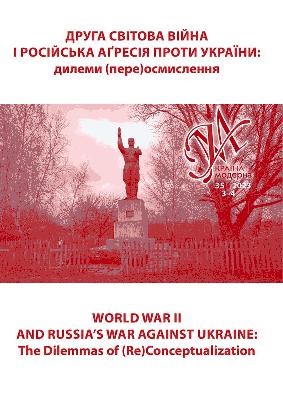Через Голокост єврейські місця Львова втратили свою спільноту, традиції та пам’ять, прив’язані до них. Ба більше, переважно вони були перетворені на руїни. Термін “місця (не)пам’яті” найкраще характеризує такі місця, які не були меморіялізовані та включені в життя громад. Проте все ж вони залишались у просторі міста та з ними відбувалась певна взаємодія. Мета дослідження — з’ясувати, які зміни відбулись на вибраних локаціях за останні десятиліття, та проаналізувати, що ці зміни означають для міста, єврейської спільноти та груп зацікавлених. Методологія дослідження: використовуючи метод спостереження та спільну рамку “географічне розміщення — історична довідка — матеріяльності місця з перспективи останнього десятиліття — соціяльна тканина — залучені інституції — пов’язані з місцем практики — перспективи локації в найближчому десятилітті”, відповісти на низку запитань. У який спосіб єврейська громада, муніципальні інституції, бізнес, митці, мешканці задіяні в процесі перетворення цих місць та що вони означають для кожного з учасників? Як констеляція цих учасників впливає на трансформацію місця? Що є необхідним для зміни статусу цих місць? Що може допомогти прив’язати місця до процесів ідентифікації окреслених груп учасників? Яку роль відіграє розміщення локації щодо важливих туристичних маршрутів? Місця показують різні сценарії використання, функціонування та ставлення до них залежно від інтересу єврейської громади, представників муніципалітету, мешканців, рівня збережености самого об’єкта чи пам’яті про нього, його розміщення щодо популярних туристичних маршрутів, комерційного інтересу. Залежно від обставин місця зазнають трансформацій і стають місцями пам’яті (як проєкт “Площа синагог”) чи все ще залишаються місцями (не)памяті (як простір на місці зруйнованої синагоги на вулиці Банківській)., As a result of the Holocaust, Lviv’s Jewish places lost their communitєs, their traditions, and the memorєs attached to them. In fact, they were largely destroyed. The phrase “places of (non-)memory” best characterizes the locations that in the aftermath were neither memorialized nor included in the lives of surrounding communitєs. Such places did, however, remain within the space of the city and were engaged in specific ways. The purpose of this study is to determine what types of changes have taken place in selected locations in recent decades and to analyze the meaning of these changes for the city, the Jewish community, and various interest groups. The research was conducted using the observational method, with a common survey framework relating to geographical location, historical context, tangible changes observed in the past decade, social interrelationships, institutional involvement, situational practices, and prospects for the next decade. Utilizing this methodology, the research strove to answer the following questions: How are Lviv’s Jewish community, municipal institutions, businesses, artists, and residents involved in the transformation of places? What meaning do places have for the respondents? How does the constellation of respondents affect the transformation of places? What is necessary for changing the status of a place? What can assist the respondents in their identificatory processes regarding places? And what role does location have in relation to important tourist routes? The places in this study have varєd functions, and they are used and perceived differently, all depending on the level of interest of the Jewish community, municipal representatives, and residents; the degree of preservation of these places or of their memory; their placement vis-à-vis popular tourist routes; and commercial engagement. Specific circumstances dictate the transformation of a Jewish place into a site of memory (for example, the Ploshcha synahoh [Synagogue Square] project) or the non-transformation of a place, which then remains a place of (non-)memory (such as the space at the site of the destroyed synagogue on Bankivska Street)., Ключові слова: місце пам’яті, місце (не)пам’яті, місце попри все, синагога, пустир, Голокост, Джерело:, Ганинець Рената. Місця (не)пам’яті про єврейське минуле Львова. // Ukraina Moderna. Volume 35, December 2023, pp. 49-67.
Сподобалось читати? Постав свою оцінку 🥰
Кількість оцінок: 0 📊 Середній рейтинг: 0
